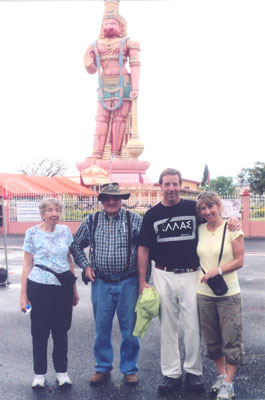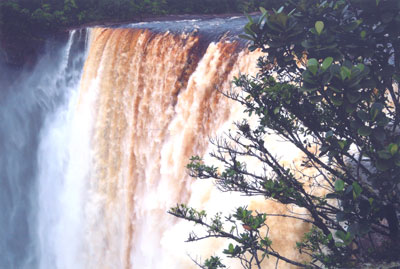South America for the birds
This item appears on page 22 of the January 2013 issue.
My wife, DarIene, and I, and our daughter and son-in-law took the 10-day “Guyana, Suriname & Trinidad” tour from Adventures Abroad (Blaine, WA; 800/665-3998). There were 17 of us on the Feb. 22-March 2, 2012, trip, the first that the company had run there in four years (they won’t run a trip if fewer than eight people sign up).
This trip was not cheap. Including air from Austin, we paid $4,560 each, which came to about $450 a day.
We began in Georgetown, the capital of Guyana, where they were celebrating Mashramani, or Mash Day (Feb. 26), marking the anniversary of Guyana’s becoming a republic. We missed the parade but saw some colorful costumes at the festival.
From Georgetown we took a minibus, then a very small high-speed boat on the Essequibo River to Baganara Island Resort. The river trip was quite rough, with lots of banging as the boat bounced on the waves. The resort, itself, was very laid-back — no electricity during the day, no air-conditioning, no TV, etc.
The tour description said we’d see “thousands of Amazonian parrots” on Parrot Island. Unfortunately, we saw only a few pairs who had come in to roost. Big disappointment!
The following day we flew to see Kaieteur Falls, after which we were supposed to fly back to Georgetown, but the planes had been sent back, so we returned via another high-speed boat and a minibus.
We left Georgetown at 3 a.m. to enter Suriname via the road and a ferry. The border-crossing process was quite time-consuming.
In the capital, Paramaribo, we stayed at the Marriott, where we had a very good dinner. We visited the central market and Fort Zeelandia in the rain. It rained a lot during our tour.
The next day we took a river cruise on the Commewijne River to see former colonial plantations. We stopped at Marienburg, site of the oldest sugar plantation in Suriname and now a cattle farm.
We reached our last stop, Port of Spain, Trinidad, on Surinam Airways. We were supposed to visit the Royal Botanical Gardens but never did. We had a panoramic view of the city from Lady Young Lookout, then drove to lovely Maracas Beach and each had a sandwich called a “Bake & Shark” for lunch.
At the Sadhu Hindu Temple, we saw cremation fires and also saw Hindus putting the ashes of their dead into the river. There are many faiths practiced in all three countries we visited.
In the late afternoon we took a small boat to the Caroni Nature Sanctuary, where we saw hundreds of scarlet ibises coming in to feed and nest. Our last day was spent at the Asa Wright Nature Center, where we saw many colorful birds.
WAYNE A. SCHILD
Austin, TX


